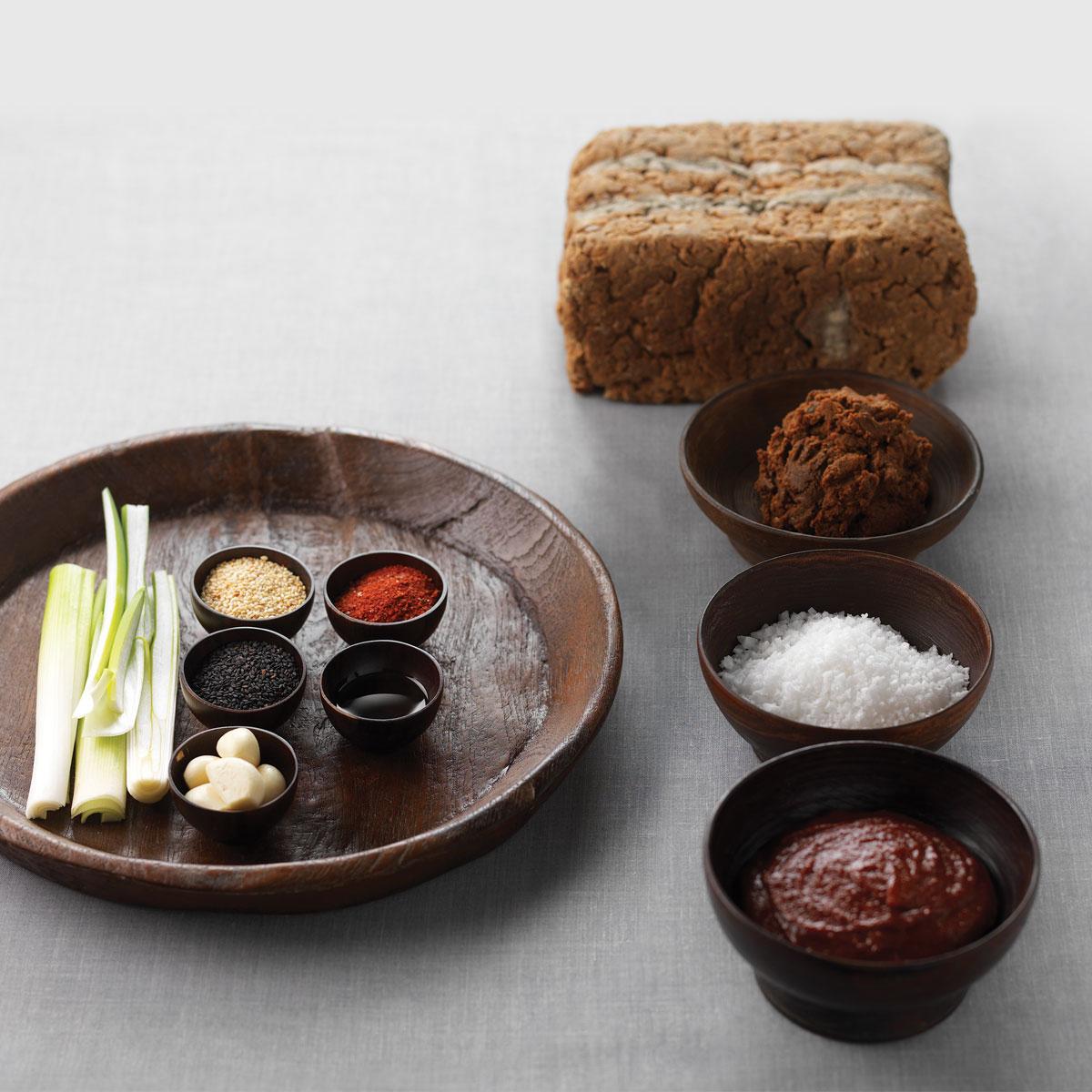THE KEY TO FLAVORS AND NUTRITION IN KOREAN CUISINE
Yangnyeom, though its direct translation is “condiments,” plays a greater role than what is typically expected of a condiment. Whereas a condiment is usually considered a minor ingredient added to boost the flavor of the major ingredient, yangnyeom sets the tone for the flavor of a dish and brings an array of health-enhancing effects. It mirrors our ancestors’ belief that food should not only please the palate but also benefit the body.
GANJANG, DOENJANG, AND GOCHUJANG,
THE THREE MAJOR TRADITIONAL CONDIMENTS MADE FROM FERMENTED SOYBEAN
Ganjang, doenjang, and gochujang are all condiments made with meju (fermented soybean blocks). Soybean is rich in vegetable protein and is packed with various essential amino acids. with various essential amino acids. Meju is made in late fall by boiling white soybeans until tender; mashing and shaping the boiled soybeans into rectangular blocks; and leaving it to age in a warm place. The blocks are then soaked in salted water for 40 to 60 days from January to February. The liquid is made into ganjang and the solid remains are what become doenjang. Gochujang is made by mixing powdered meju with glutenous rice paste and gochugaru (chili pepper powder) and then fermenting.
GREEN ONION, GARLIC, AND KOREAN CHILI POWDER
THE THREE ESSENTIAL HERBS IN KOREAN CUISINE
Green onion, garlic, and chili pepper powder are basic herbs that are almost always used in Korean cooking. Specially when making kimchi, green onion, garlic, and chili powder are crucial ingredients that can’t be substituted or omitted. Green onion helps remove unwanted odors in meats, and also adds flavor when seasoning vegetables. Garlic is becoming more and more popular due to its strong antibacterial, anticancer, and antioxidant effects. Its pungent smell and taste complement Korean dishes well. Korean chili powder is made by grinding well dried Korean chili. The bright red color instantly stimulates the appetite, and capsaicin, the substance in chili peppers that makes them spicy, is known to help boost weight loss.
KKAESOGEUM, CHAMGIREUM, AND DEULGIREUM
FLAVORFUL AND HEALTHY OILS
Kkaesogeum (ground sesame seeds with salt), chamgireum (sesame oil) and deulgireum (perilla oil) are ingredients that make Korean dishes more flavorful and savory. Kkaesogeum is usually used as garnish, and adds flavor, whereas chamgireum and deulgireum are usually used to add flavor in foods like namul (salad), japchae (stir-fried glass noodles and vegetables), and bibimbap.



![[A ZONE] Gangnam Food Spot](https://m.dgram.co.kr/wp-content/uploads/2020/09/A존-알래스카3-특성이미지_S-218x150.jpg)
![[A ZONE] Gangnam Life Style](https://m.dgram.co.kr/wp-content/uploads/2020/09/로우클래식1-특성이미지_S-218x150.jpg)








![[A ZONE] Gangnam Food Spot](https://m.dgram.co.kr/wp-content/uploads/2020/09/A존-알래스카3-특성이미지_S-324x160.jpg)
![[A ZONE] Gangnam Life Style](https://m.dgram.co.kr/wp-content/uploads/2020/09/로우클래식1-특성이미지_S-324x160.jpg)




